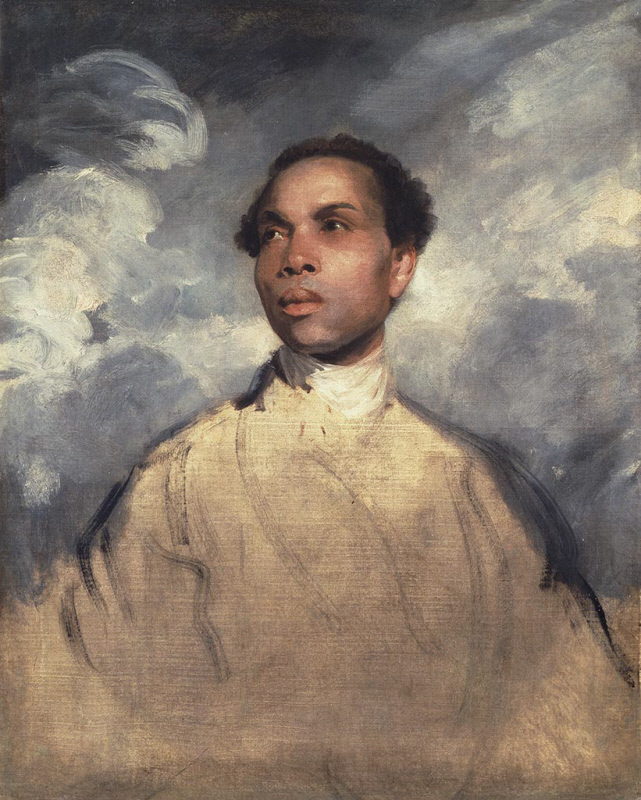A popular figure in the intellectual circles of late-18th century London, Sir Joshua Reynolds was the most sought-after portraitist of his time. The subject of this canvas remains something of a mystery. In a 1912 auction, the sitter was identified as Omai, a Tahitian who created a sensation in British society when he visited in the 1770s. Comparison to known depictions of Omai, however, belies this attribution. When the painting was first exhibited publicly in 1813, the sitter was described as “Sir Joshua’s black servant,” although Reynolds’ other representations of his employee, whose name does not survive, bear little resemblance to the Menil’s canvas. Most consistently and convincingly, the portrait’s subject has been named as Francis (Frank) Barber. Born into slavery in Jamaica, Barber was brought to England as a child, where he was eventually liberated. The prominent English writer Samuel Johnson hired Barber initially as a butler but later made Barber a secretary and close confidant.
Although the identity of Reynolds’ sitter remains ambiguous, his canvas fulfills its function as a portrait of an individual. Reynolds’ intentions for the image are not known; the artist left no record of why he created it or whether he considered it finished. In contrast to most European representations of Black subjects from this era, Reynolds portrays his model in a setting stripped of social indicators, eliminating suggestions of servility and exoticism. Reynolds instead emphasizes the sitter’s humanity. His composed expression and far-away gaze suggest an inner life, evoking a thoughtful and fully realized person. This rare portrayal was widely imitated. At least ten copies of the work are known, some by the artist’s own apprentices and others by painters outside his atelier.

